Biography
Inge Lehmann grew up in Denmark in the early 20th century, a time when women were almost totally excluded from the sciences. Born in Copenhagen in 1888, she was the daughter of experimental psychologist Alfred Georg Ludvig Lehmann (1858-1921) and Ida Sophie Tørsleff, and studied at a progressive pedagogical school run by Hanna Adler (1859-1947). The headmistress of the school, an aunt of Niels Bohr (1885-1962), taught the same subjects to both girls and boys, making it the first co-educational school in Denmark. Lehmann wrote years later, "No difference was recognised between the intellect of boys and that of girls", "a fact which gave me some disappointment later on, when I had to recognise that this was not the general attitude".
There he became fascinated by mathematics, and in 1910, Lehmann graduated from the University of Copenhagen with a degree in mathematics. After several years working in the insurance industry, he returned to the University of Copenhagen to study for a master's degree in mathematics.
In 1925, she finally had her first contact with the field in which she was to make her mark: seismology. That year she became the assistant to the mathematician Niels Erik Nørlund (1885-1991), director of the Royal Danish Geodetic Institute. Although it was not part of her job, Lehmann travelled to Greenland and other places to supervise the installation of new seismometers and collect data. At the same time, he learned seismology on his own and ended up writing a thesis on the subject and obtaining another postgraduate degree. He studied seismology in Hamburg (Germany), Darmstadt (Germany), Strasbourg (France), De Bilt (the Netherlands) and Uccle (Belgium). During her month-long stay in Darmstadt she was under the command of Beno Gutenberg (1889-1960) who was the scientist who determined the depth to the earth's core.
In 1928, she was appointed first head of the seismology department of the Royal Danish Geodetic Institute. Until she left this post in 1953, in addition to reporting from the station, she also carried out research work and published several scientific papers.
At that time, scientists believed that the Earth's core consisted of molten rock, surrounded by a solid mantle and then by the crust. This model explained why, when large earthquakes occurred, certain types of seismic waves were not detected at specific locations on the other side of the world: the waves were bent as they travelled through liquid materials. By bending them, the core created a "shadow zone" in which the waves were not detected.
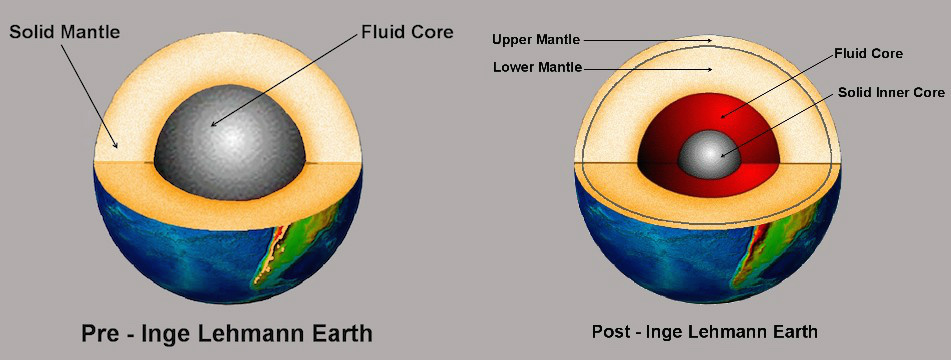
In the late 19th century, seismologists discovered that it was possible to use these waves in much the same way as X-rays, looking into the bowels of the Earth in a way that is not yet possible with probes. When an earthquake occurs, two main types of seismic waves are triggered: P-waves, which arrive first (and involve a compressional wave rolling along the ground), followed by S-waves (in which the ground shakes from side to side). In 1914, German-American seismologist Beno Gutenberg used this method to discover that, some 1,800 kilometres below the Earth's surface, the solid mantle gives way to a semi-liquid core.
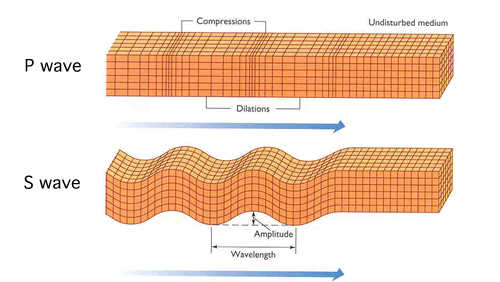
Data collected by the first seismometers placed around the world showed that S-waves were only detected up to a distance of about 104°. Meanwhile, P-waves also stopped abruptly at 104°, but became active again at about 140°, leaving a so-called "shadow zone" with no waves in between. But there was a problem with the model: some weak P-waves were detected between 104° and 140°. For years, seismologists assumed that these were due to faults in the seismometers. Lehmann, however, was puzzled by them, especially after an earthquake in New Zealand in 1929 sent very strong P-waves into the improved seismometer network she had helped set up in Europe.
If the core was fully molten, this would not have been possible, seismologists were faced with a great mystery about the Earth's internal structure.
Over the next few years, Lehmann pored over this and other data sets. In the pre-digital era, her cousin later recalled, Lehmann wrote down the data on pieces of cardboard torn from oatmeal boxes, and sometimes sat surrounded by them in her garden, poring over the numbers. Eventually, he came up with an idea: a solid inner core inside the soft, molten outer core, which would reflect some P-waves, causing them to end up in the shadow zone.
His later calculations, published in a 1936 paper entitled simply "P" (as P-waves were then called), confirmed the idea. "I then placed a smaller nucleus inside the first nucleus and let the velocity in it be greater so that a reflection would occur when the rays through the larger nucleus met it," he wrote, years later. "It was seen that the existence of a small solid core in the innermost part of the Earth caused waves to appear at distances where it had not been possible to predict their presence.
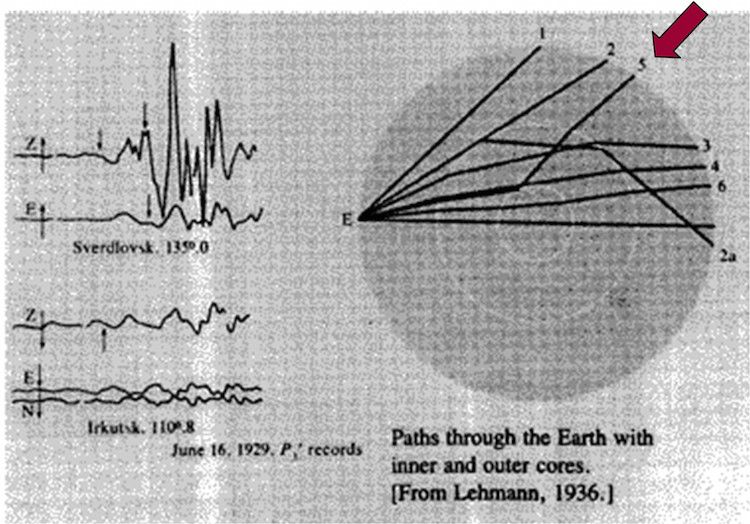
One of the illustrations from Inge Lehmann's 1936 paper (Inge Lehmann).
The simple and elegant solution was correct, and was quickly adopted by other seismologists in the following years. Other data, collected in subsequent decades, have confirmed Lehmann's hypotheses and provided us with more information on the size and composition of the inner core.
In simple terms, the existence of a solid part inside the liquid core is manifested by the fact that P-waves (primary waves in the seismological record) undergo a deflection and velocity change (accelerate) as they cross the discontinuity separating the two parts of the core inwards. This discontinuity is called the "Lehmann discontinuity", after him.
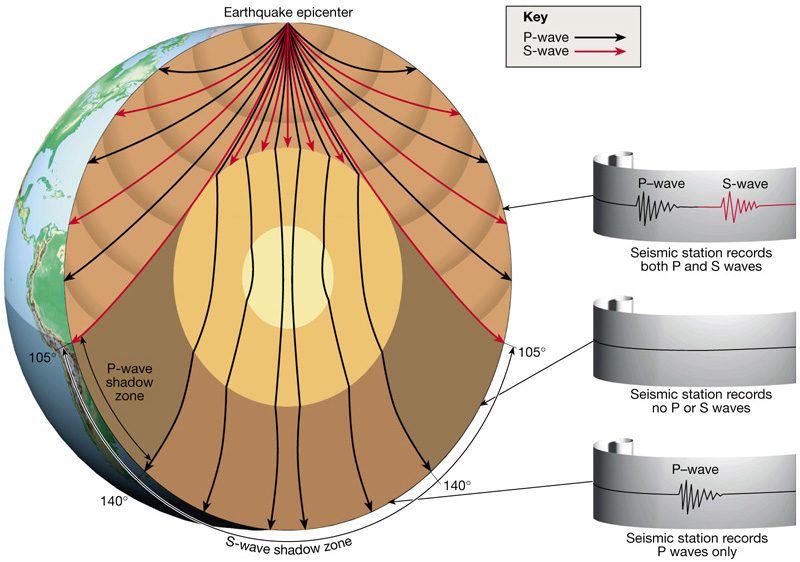
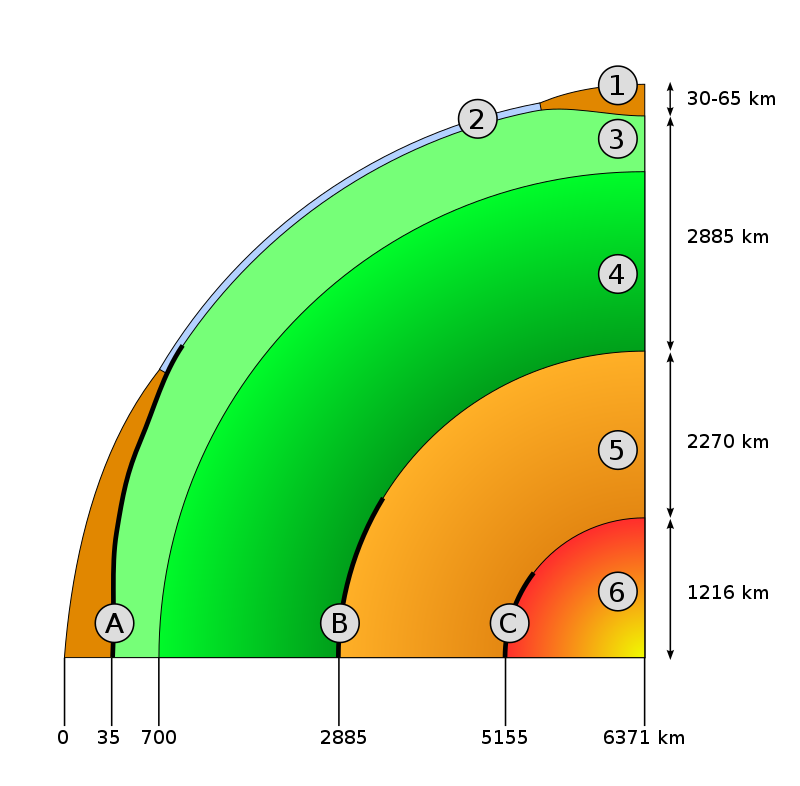
Diagram of the Earth's interior.
1: continental crust 2: oceanic crust 3: upper mantle 4: lower mantle 5: outer core 6: inner core
A: crust-mantle interface (Mohorovičić discontinuity, "Moho") B: core-mantle interface (Gutenberg discontinuity)
C: outer-inner core interface (Lehmann discontinuity)
The discovery of the inner core was Lehmann's greatest
scientific achievement, but not the only one. She continued her seismological research until she was 70 years old and became one of the world's experts on the composition of the upper mantle.
Throughout her life she devoted herself to the world of geophysics and, in 1971, she won the William Bowie Medal, the highest award of the American Geophysical Union for her fundamental discoveries in the field of geophysics, among other distinctions, being the first woman to receive such an award. She died in 1993.
References:
- Arantza Muguruza Montero (@amugu_zientzia) "Viaje al centro de la tierra… con Inge Lehmann" https://mujeresconciencia.com/2017/01/17/viaje-al-centro-de-la-tierra-con-inge-lehmann/
- Joseph Stromberg, "How Inge Lehmann used earthquakes to discover the Earth’s inner core", Vox, 13 mayo 2015 https://www.vox.com/2015/5/13/8595157/inge-lehmann
-https://es.wikipedia.org/wiki/Inge_Lehmann





